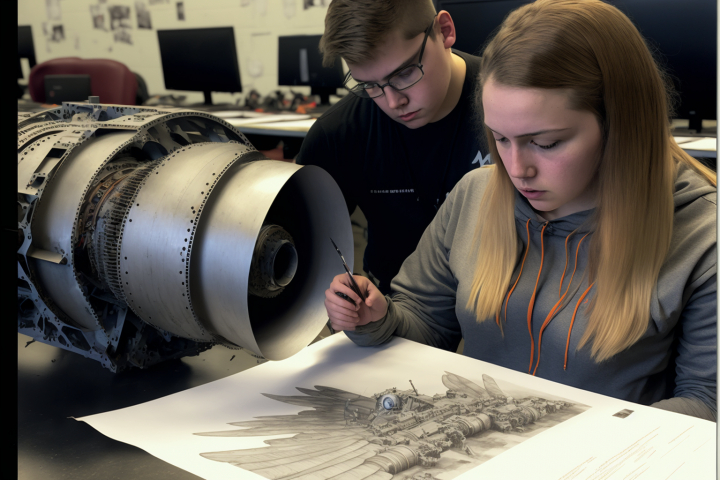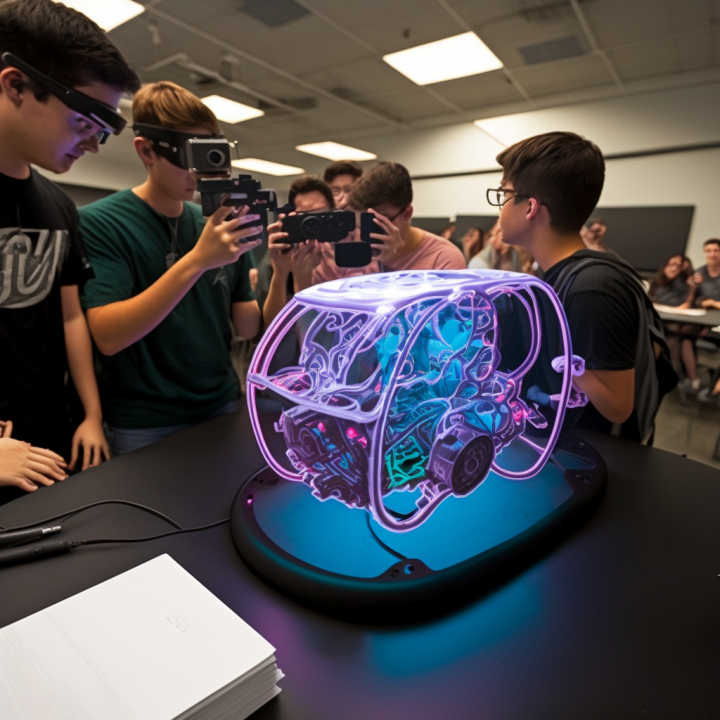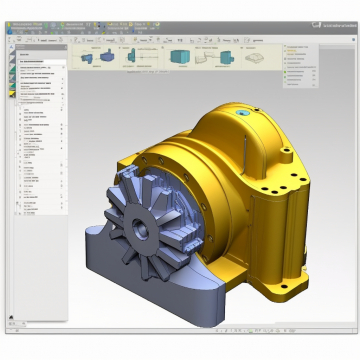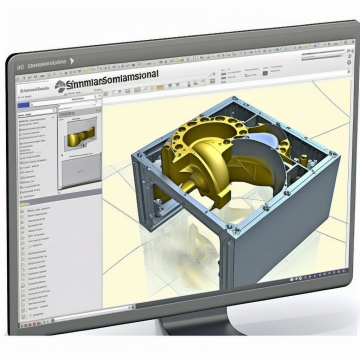Engaging Classrooms with Interactive Physics: A Dynamic Learning Experience
Thursday, 18 August 2022Interactive Physics is a powerful teaching tool that enhances students' motivation and learning experiences in the classroom. By offering a diverse collection of ready-to-use experiments and captivating in-class demonstrations, Interactive Physics saves teachers valuable lesson-preparation time. Seamlessly integrating into any physics curriculum, this versatile software aligns with National and State Education Standards and Objectives, ensuring a comprehensive educational experience.
Interactive Physics revolutionizes traditional teaching methods by transforming classrooms into interactive learning environments, fostering student engagement and comprehension.
Through captivating demonstrations and hands-on experiments, Interactive Physics sparks students' curiosity and facilitates a deeper understanding of complex physics concepts.
Teachers can easily customize Interactive Physics to suit their specific lesson plans and objectives, ensuring a tailored educational experience for students.
The software's extensive library of ready-to-run experiments allows educators to swiftly integrate Interactive Physics into their existing curriculum, enhancing lesson delivery and student engagement.
Interactive Physics aligns with National and State Education Standards, ensuring that students receive a thorough and well-rounded physics education.
The software enables educators to create dynamic, real-world simulations that captivate students and encourage active participation in the learning process.
Interactive Physics promotes collaborative learning, as students work together to explore physics concepts, solve problems, and discuss their findings.
By simulating real-life scenarios, Interactive Physics helps students bridge the gap between abstract theoretical concepts and practical applications.
The software's intuitive interface allows students to quickly grasp its functionality, ensuring that valuable classroom time is focused on learning physics concepts.
Interactive Physics supports various learning styles, enabling students to engage with the material in a way that best suits their individual needs.
Educators can leverage Interactive Physics to assess students' understanding of concepts, identify misconceptions, and provide targeted feedback.
The software's customizable nature allows teachers to create unique lesson plans that cater to students with different skill levels and learning preferences.
Interactive Physics encourages students to develop critical thinking and problem-solving skills, essential components of a strong physics education.
The software's real-time simulations enable students to visualize the immediate effects of their actions, fostering a deeper understanding of cause-and-effect relationships.
By incorporating Interactive Physics into their classrooms, educators can cultivate a supportive learning environment that encourages students to ask questions, experiment, and learn from their mistakes.
Interactive Physics equips students with the tools necessary to explore various physics principles, empowering them to take charge of their learning journey.
The software's visually engaging simulations and demonstrations help to demystify complex physics concepts, making them more accessible to students.
Interactive Physics serves as an invaluable resource for educators, streamlining lesson preparation and promoting efficient teaching strategies.
By providing real-world context and applications, Interactive Physics helps students recognize the relevance of physics in their daily lives.
The software's adaptability allows educators to keep pace with evolving educational standards and objectives, ensuring that their students receive a future-proof physics education.
Interactive Physics fosters a sense of accomplishment in students as they successfully navigate and understand challenging physics concepts.
The software allows students to experiment with various parameters and observe the results, promoting a more nuanced understanding of the underlying principles.
Interactive Physics can be used as a supplementary tool for homework and independent study, reinforcing students' understanding of class material.
Educators can integrate Interactive Physics into a flipped classroom model, allowing students to explore concepts independently before engaging in class discussions.
The software's visually captivating demonstrations facilitate better retention of physics principles, ensuring that students internalize key concepts.
By utilizing Interactive Physics, educators can create a more inclusive learning environment that caters to students with diverse learning needs.
The software's simulations provide immediate feedback
In addition to providing a more intuitive understanding of physics concepts, Interactive Physics allows students to conduct experiments and simulations that would be impossible in a real-world laboratory. This can save time, resources, and reduce safety risks associated with traditional laboratory experiments.
Interactive Physics provides an innovative and engaging way to learn physics. With its comprehensive simulations and interactive design, it offers a deeper understanding of complex concepts that cannot be achieved through traditional learning methods.
Working Model is a powerful simulation software that allows professionals in the fields of science and engineering to create virtual models of their designs and test them in a controlled environment. The software is specifically designed to help professionals develop and refine their skills in the areas of school-to-work skills, which are essential for success in the workplace.
- Engineering students often grapple with deciphering intricate equations in their textbooks, but Working Model helps demystify the mathematical labyrinth.
- Working Model transforms the daunting world of engineering equations, allowing students to visualize and engage with challenging ideas more effectively.
- The complexities of engineering textbooks can be overwhelming; however, Working Model simplifies the math, enabling students to visualize and interact with otherwise perplexing concepts.
- With Working Model, engineering students can conquer the enigmatic equations in their textbooks, as it allows them to visualize and better comprehend intricate ideas.
- Engineering students can now navigate the intricate web of textbook equations with ease, thanks to the visualization and interactive capabilities of Working Model.
- Working Model provides engineering students with the tools to unravel the tangled world of textbook equations, enabling them to better visualize and interact with complex concepts.
- Engineering students no longer need to feel lost in the maze of textbook equations, as Working Model offers a way to visualize and engage with these challenging ideas.
- The Working Model software revolutionizes the way engineering students approach complex textbook equations, by allowing them to visualize and interact with these concepts effortlessly.
- Engineering students can now tackle the intricacies of textbook equations head-on, with Working Model providing a platform for visualizing and interacting with these demanding ideas.
- Working Model empowers engineering students to decode the mysteries of textbook equations, facilitating visualization and interaction with otherwise challenging concepts.
- The enigma of engineering textbook equations becomes more approachable for students with the help of Working Model, which allows them to visualize and engage with complex ideas.
- Through the use of Working Model, engineering students can bridge the gap between intimidating textbook equations and a more comprehensive understanding of complex concepts.
- Engineering students can conquer the challenges of deciphering textbook equations by utilizing Working Model's capabilities to visualize and interact with these intricate ideas.
- Working Model is a game-changer for engineering students, as it enables them to make sense of convoluted textbook equations by visualizing and interacting with these concepts.
- With Working Model in their toolkit, engineering students can break down the barriers of understanding complex textbook equations, as it enables them to visualize and engage with these ideas.
- Demystifying the world of engineering textbook equations is now possible for students, thanks to Working Model's ability to help them visualize and interact with complex concepts.
- Engineering students can triumph over the formidable equations in their textbooks with the aid of Working Model, which facilitates visualization and interaction with intricate ideas.
- By employing Working Model, engineering students can navigate the intricate landscape of textbook equations with greater ease and understanding.
- Working Model serves as a valuable tool for engineering students, enabling them to untangle the complex web of textbook equations and visualize these challenging concepts.
- The challenge of comprehending complex engineering textbook equations is significantly reduced for students when they use Working Model to visualize and interact with these ideas.
K2 Archives
K2 Comments
K2 User
K2 Content
- Instructor Insights and Academic Endeavors: Interactive Physics in Action Written on Friday, 19 August 2022 07:53
- 3D Dynamic Motion Simulation with Advanced Features Written on Friday, 19 August 2022 07:52
- SimWise: Comprehensive Simulation Capabilities for Engineers and Designers Written on Friday, 19 August 2022 07:51









